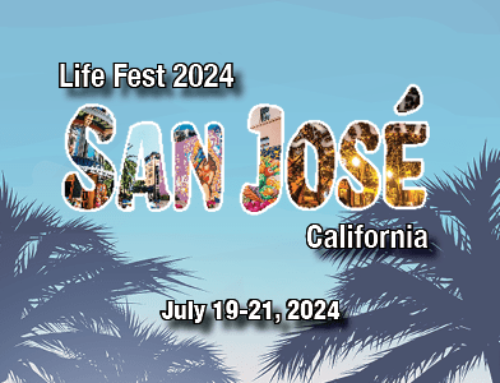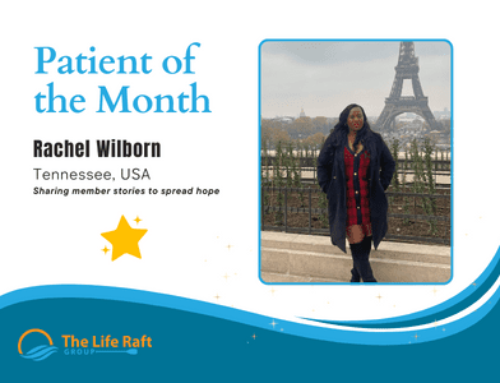
Representatives from the Life Raft Group recently traveled to Prague, Czech Republic to attend the annual Connective Tissue Oncology Society (CTOS) meeting. CTOS is an international group comprised of physicians and scientists with a primary interest in the tumors of connective tissues. The goal of the society is to advance the care of patients with connective tissue tumors and to increase knowledge of all aspects of the biology of these tumors, including basic and clinical research.
The LRG was honored to present a poster that summarized our recently completed mutational and plasma level testing survey. The poster from the study, entitled “The Investigation of Routine Mutational Testing and Routine Plasma Level Testing: A Survey of Patients, Caregivers, and Physicians” was displayed alongside numerous other GIST-related posters throughout much of the conference.
A number of these posters were of interest to the GIST community. Among them was one from Dr. Mikael Eriksson from Skane University Hospital in Sweden, who presented a poster along with one of his colleagues, entitled “Low Dose Imatinib May Be Active in Many GIST Patients with Intolerance to Standard Dose.” The study looked at a retrospective analysis of five cases of GIST patients, all Exon 11 and with metastatic disease, who have responded satisfactorily to very low doses of imatinib – from 200 mg daily to as low as 100 mg every fourth day. These patients were able to experience low levels of side-effects and have not had further progression. While this study did deal with a small number of cases, it is interesting to note that these patients did respond to doses that would be considered lower than normal. If this were to be validated through further study, the potential exists to prescribe patients experiencing significant side-effects even lower doses of imatinib before switching them to other drugs.
In addition to the standard poster session, there was also a juried poster session and a number of presentations. A number involved members of the LRG Research Team. One of these, from Dr. Maria Debiec-Rychter and her colleagues at the Catholic University in Leuven, Belgium, entitled “MIR-17, MIR-20A and MIR-222 Target KIT and ETV1 in Gastrointestinal Stromal Tumors (GIST)”, looked at microRNA (miRNA), a small RNA molecule that helps regulate gene expression, and “aimed to discover any GIST specific miRNA expression patterns and identify miRNAs involved in GIST tumorigenesis.” The study involved 50 primary GIST tumors and 10 leimyosarcomas of the GI tract. The results identified a number of miRNAs that may be implicated in GIST. A decreased level of three of these, MIR-17, 20A, and 222, may contribute to the overexpression of KIT as well as ETV1, genes that play a key role in GIST. When expression of these miRNAs was increased, KIT and ETV1 protein levels were decreased, thus inhibiting cell proliferation and causing cell death (apoptosis). This points to the possibility of these specific microRNAs as targets for future therapeutic treatments.
Another study, led by Dr. Piotr Rutkowski and also involving Dr. Maria Debiec-Rychter, was a long-term analysis of GIST survivors. The study, entitled “How Did the Results of Advanced GIST Treatment Improve Over 10 Years: Analysis of Inoperable/ Metastatic/Recurrent GIST Treated With Imatinib in 2001-2009. Who are Long Term Survivors?” was a retrospective analysis of 370 inoperable/metastatic/recurrent GIST patients, and looked at a number of different prognostic factors. The results determined that long-term survivors (five years or greater) were characterized by having smaller tumors at start of imatinib treatment, higher neutrophil or albumin levels, better World Health Organization (WHO) performance status, and surgery that removed all residual disease. Perhaps the most striking aspect was that the median progression-free survival (PFS) of these patients on first-line imatinib was 35.6 months, a figure that is greater than the 24 months that is generally reported.
Another presentation, led by the aforementioned Dr. Michael Eriksson but also involving Drs. Peter Reichardt, Heikki Joensuu, Peter Hohenberger, and LRG Research Team member Dr. Sebastian Bauer, was entitled “Needle Biopsy Through the Abdominal Wall for the Diagnosis of GIST – Does it Pose any Risk for Tumor Cell Seeding” and looked to see if performing this particular type of biopsy was associated with negative outcomes for patients in terms of PFS or overall survival (OS). The results suggest that this is not the case, but the authors suggest they should be viewed with caution due to the retrospective nature of the study and the relatively small number of cases studied (393).
An additional study, entitled “A Medium Throughput Compound Screen Identifies Novel Treatment Options for Gastrointestinal Stromal Tumor (GIST)” was led by Life Raft Group Research Team member Dr. Anette Duensing. The study re-evaluated some chemotherapy drugs for their sensitivity to GIST. A total of 89 FDA-approved compounds were studied and tested against five GIST (imatinib-sensitive and imatinib-resistant) and two leiomyosarcoma cell lines. GISTs were found to be highly sensitive to several drug classes, most notably inhibitors of transcription and topoisomerase II – in some cases more so than imatinib or sunitinib. In the words of the study authors, “these drug classes should be considered as viable treatment options for GIST patients, and the initiation of clinical trials is warranted.”
Finally, Dr. Peter Reichardt and his colleagues gave updated results on the GRID trial for regorafenib, which included 199 patients. Their results showed that the study met its primary endpoint, significantly improving median PFS both per central review and investigator assessment. The median PFS for central review was 4.8 months (vs. 0.9 months for placebo) and for investigator assessment 7.4 months (vs. 1.7 months for placebo).
All in all, the CTOS meeting delivered a number of studies that showed particular promise for GIST, many involving esteemed members of the LRG Research Team, and the Life Raft Group was honored to both participate and present their poster at the event.




